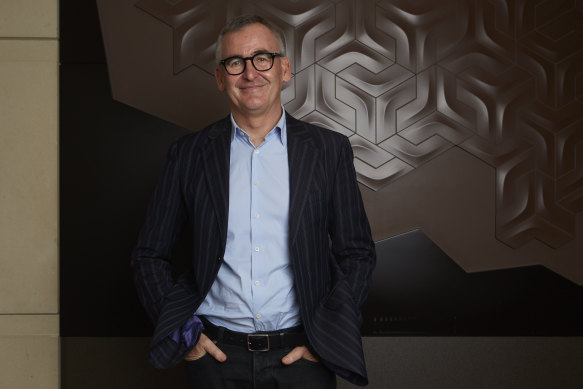Slow motion checkout by Woolworths chief executive a bad look
The chief executive of Woolworths, Brad Banducci, is to retire having strengthened the supermarket giant’s profitability. But despite his considerable business achievements, many families will remember him as one of the corporate leaders responsible for taking more and more out of their weekly budgets.
Banducci will not leave for six months. He will therefore appear before the ACTU’s inquiry into price gouging and unfair pricing practices. He is most likely to be one of the fall guys to carry the can for supermarkets and cop a shellacking from politicians.

But his staying on may afford his successor at Woolworths, Amanda Bardwell, an opportunity to distance herself from the past as the company attempts to balance customer outrage against shareholder expectations.
After years of high-profile success, Banducci has not been travelling well of late. Amid growing rage over price gouging, he was caught in the political crossfire over Woolworths’ decision not to sell Australia Day merchandise.
Then on Monday he briefly walked out from an ABC Four Corners interview after being asked about former Australian Competition and Consumer Commission chairman Rod Sims’ observation that the Australian grocery sector was one of the most concentrated in the world.
Fit of pique? Who knows? But surely Banducci would have been expecting a question along these lines. After all, monopoly has long been a major way of making money in Australia. Just ask the old media owners, Qantas, GrainCorp, big miners and for that matter, the four big supermarkets. The latter group holds 85 per cent of the market and Woolworths and Coles have 70 per cent of the total share. The two biggest supermarket chains are being pilloried as Australians struggle to meet the escalating cost of living.
Two days after his train wreck interview aired, Banducci pulled the plug. Woolworths chairman Scott Perkins said he was not pushed, and the company had been looking for a replacement since last winter.
Banducci sought to put a good spin on his impending retirement after eight years as Woolworths CEO, saying it was his own decision and came after “important conversations” with his family in recent years and awareness of his own “mortality”.
But the timing looks all wrong. Apart from his recent missteps, minutes after the announcements of Banducci’s retirement and Bardwell’s appointment, Woolworths’ half-year results were released. The supermarket giant’s group sales rose 4.4 per cent to $34.6 billion in the six months to December 31, boosted by a 17.8 per cent lift in online sales.
Operating earnings rose 5.3 per cent to $3.1 billion, and profit excluding significant items increased 2.5 per cent to $929 million. However, $1.7 billion in charges for goodwill writedowns on the company’s New Zealand food business helped push its bottom line into the red, to a net loss of $781 million.
The supermarket giant’s news about profits and chief executives sent its share price down by more than 6 per cent. And if investors were not impressed, Woolworths’ customers are entitled to be even more upset, not least because they perceive Banducci has made their lives harder.
Like it or not, Banducci’s exit, albeit in slow motion, raises the spectre of former Qantas chief executive Alan Joyce. Both men have been blamed for driving up company profits and alienating customers. They are unlikely to be missed.
Woolworths and Coles have created such a bad name for themselves that many Australians have run out of money and sympathy. With so many ordinary shoppers believing Woolies is making too much money, Bardwell’s big challenge will be to decide how much profit can be sacrificed to restore customer loyalty.
The Opinion newsletter is a weekly wrap of views that will challenge, champion and inform your own. Sign up here.
Most Viewed in Business
Source: Thanks smh.com